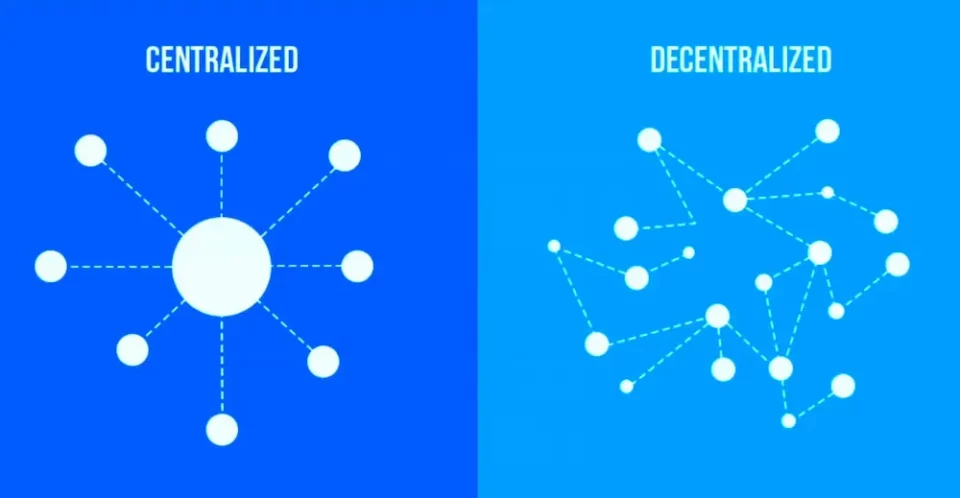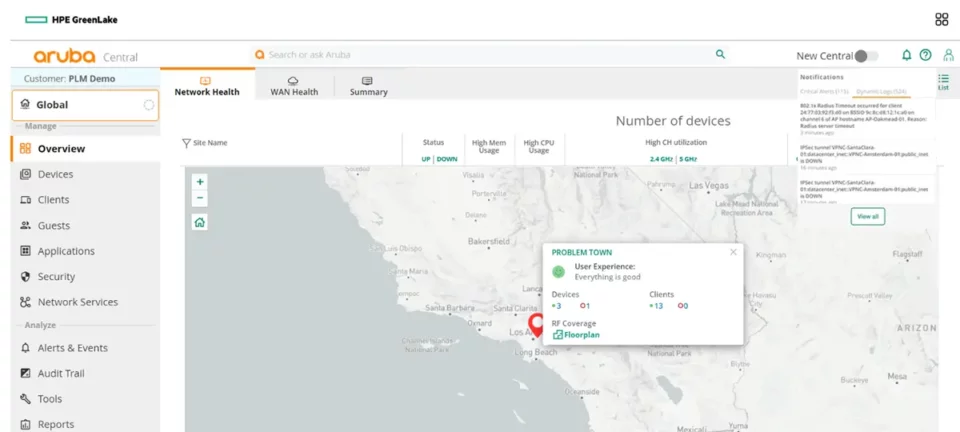Your Fix for Network Decentralization
Schools, stores, hospitals, churches, and similar organizations that operate across multiple locations often face challenges due to decentralization. Each location has its own unique networking needs, yet despite these differences, it’s crucial for these organizations to maintain a consistent and streamlined process. This consistency ensures the entire operation is logistically viable and cost-effective. Thankfully, cloud management has enabled the standardization of certain wireless IT operations, such as software deployment, across multiple sites. However, a significant gap remained: the ability to manage both wired and wireless hardware and software in a unified manner. The missing piece has been the integration of all these elements within a single workstation, viewed through a single pane of glass.
“Many decentralized organizations with locations spread apart geographically are feeling the effects of soon-to-be-outdated networking equipment and tedious manual processes,” said Anthony Nabower of Prime Secured. “These organizations may be facing the challenge of limited IT resources to begin with and may have limited budgets.”
Having unified network operations or cloud management technology solves these problems and takes us into a new era of network management. We are going to introduce the benefits of this technology to you in this article, highlighting the role of Aruba Central in revolutionizing network management. But first, let’s examine the problems it answers.
Common Challenges Faced by Network Managers in Decentralized Organizations
As technology increasingly moves to the cloud, it can be a challenge for IT personnel to manage both old systems and new cloud capabilities efficiently and cost-effectively. Multi-location organizations must send IT personnel to each location to address the unique technology needs of that site. Then they have to do it all over again for every site in the network. Even individual sites, such as schools, often have multiple access points in one location. This presents a number of interconnected issues and potentially creates a perfect storm for network failures:
- Limited resources. Each location in a dispersed network requires individualized hardware, software, service and other considerations to operate effectively. It can be a challenge to fit all needs into limited schedules and budgets.
- Demanding travel. Technicians must physically travel to each location in a decentralized organization. This costs time and money and can result in burnout.
- Rising costs. In addition to the costs of traveling to multiple locations, network personnel must somehow stretch budgets to accommodate troubleshooting and updating of aging systems, including replacement of hardware and integration with new platforms.
- Time challenges. As technology changes, network requirements expand and systems age, it becomes more and more difficult to schedule all the work that’s needed.
- Multiple logins. The need to log into multiple wiring closets, switches, access points and applications creates a demanding, time-consuming, complex environment for IT service.
- Potential for error. Multiple configurations, ports, APs and switches in different locations — not to mention personnel burnout — present many opportunities for human error, which amounts to more time and cost.
Thankfully, technology continues to change and overcome these challenges. Some organizations are making the switch a little at a time. Others see the benefit and eventual cost savings of making a wholesale change as an investment into their future.
Networking’s Inevitable Move to the Cloud
New unified systems for cloud management are making it possible to manage systems faster, more effectively, and more cost-effectively than ever before. Nabower states this change in technology amounts to a revolution for organizations with multiple locations, and he encourages decision-makers to seriously consider moving completely to the cloud. “It’s going to happen eventually anyway. The key now is to make sure your investment today takes advantage of cloud compatibility.”
As soon as cloud management technology became available, Prime carefully vetted providers and made a commitment to work with a pioneer in world of networking management: HPE Aruba Networking, a company Gartner has placed as an industry leader in the Gartner Magic Quadrant.
Aruba’s cloud management platform is called “Aruba Central.” According to the company’s website, the platform offers “easy to use deployment tools in a single pane of glass … a three-step onboarding wizard, zero touch provisioning, a mobile app, [and] intuitive dashboard and reporting capabilities [to] help manage distributed environments of all sizes.”
How Unified Networking Platforms Solve Decentralized Networking Challenges
When it comes to day-to-day operation, a unified networking platform directly answers the problems listed above with both inherent qualities of the system and targeted features to provide substantial value for an organization.
- Combined access to equipment and applications. A unified networking platform simplifies network management by providing access to all hardware and software in wireless, wired and SD-WAN environments. Everything can be controlled and managed from a single location.
- Improved visibility. With cloud management on a unified platform, you can see everything at the same time in a single pane of glass. This allows IT personnel much more flexibility and makes it easier to understand what’s going on across the network.
- Deeper analytics. Data such as bandwidth and traffic in different locations can be combined and compared in many ways to help company leaders see trends over time.
- Remote access. A cloud-based networking management platform can administer IT systems from anywhere if you have Internet access and a browser. Travel is no longer required to manage every little issue or installation!
- Enhanced security. Cloud-based applications allow two-factor authentication, which provides a higher level of security for access than consoles that are limited to what you can do with a desktop or laptop. The platform allows flexibility in the way you secure your network. The system itself does not retain any files or personally identifiable material.
- Consistency. Management from a central cloud-based platform allows consistent application of processes and programs to all remote sites. For example, IT personnel can be assured that all updates are completed correctly, and all ports are in the right VLAN, which reduces troubleshooting and downtime for the network.
- Automation. As programs and processes are moved to the cloud, it becomes possible to increase automation. “Automated software updates are a no-brainer,” said Nabower. “But the system also can handle more complex automations, such as pushing out API commands.”
- Reduced staffing. Less travel, remote access, combined processes and other features of cloud management can lead to a potentially substantial reduction in personnel. “I’ve seen organizations go from two network administrators to one,” commented Nabower.
- Cost savings. All of the above very obviously results in a reduction of day-to-day IT costs.
- Scalability. As needs change and the organization grows, it’s much easier to add or subtract from a cloud-based system than it is to physically add or remove hardware and software from multiple locations. “You can scale up or down as needed, and you only pay for what you use,” Nabower added.
Prime Secured specializes in deployment of the Aruba Central cloud management platform. Our integration engineers are highly trained and certified through Aruba. “We can help you not only deploy this exciting solution but create policies and tools for you to manage it masterfully,” said Nabower. Prime also offers monthly managed services packages and flexible financing options for customers who are ready to make the switch.
Cloud Management is Technology of the Future Available Today
In the end, the biggest draw of a unified cloud management networking platform is ease of use. With this simplifying technology available, there’s no reason to continue dealing with painful gaps in service, burdensome trips to multiple locations, inconsistency, errors and security breaches.
If your network suffers from limited resources, bandwidth issues, personnel crunches and rising costs just to keep your old distributed system going, it might be time to invest in your future. Ask us how your organization can start down a path to improved efficiency, fewer mistakes, greater flexibility and deeper insight using a unified cloud management platform.
For more information about Aruba Central or any of your networking or integration needs, call Prime Secured at 402-289-4126 or visit us at www.primesecured.com.






